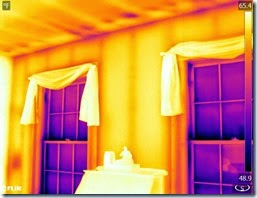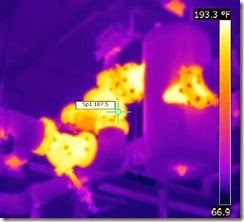Matt Schwoegler, Infrared Training Center
The effects of the Sun on the surface of a building can make inspections quite challenging for thermographers looking for missing insulation. The transient conditions created by solar loading not only mask infrared patterns on the exterior, it also impacts the thermal signature on the interior, perhaps leading one to believe (in the right conditions) that a wall appears to be uninsulated, when in fact it is insulated.
To capture this, I recently set-up an infrared camera at home to monitor thermal changes on a south facing wall from the interior. The plan was to image the pattern reversal that occurs on an interior surface when the Sun heats the exterior up to a point where the direction of heat flow in the wall reverses, even though the air temperature remains colder outside.
 I programmed the camera to record an image every 15 minutes starting at 7:00 a.m. Conditions at the time were ideal to check for insulation problems in a wood-frame building given the interior air temperature of 68˚F (20˚C) and an exterior air temperature of 33˚F (0.5˚C). The first image taken, seen here on the right, shows a wall which appears to be mostly well insulated (warm cavities and cooler framing). As the day progressed, however, the situation changed dramatically.
I programmed the camera to record an image every 15 minutes starting at 7:00 a.m. Conditions at the time were ideal to check for insulation problems in a wood-frame building given the interior air temperature of 68˚F (20˚C) and an exterior air temperature of 33˚F (0.5˚C). The first image taken, seen here on the right, shows a wall which appears to be mostly well insulated (warm cavities and cooler framing). As the day progressed, however, the situation changed dramatically.







